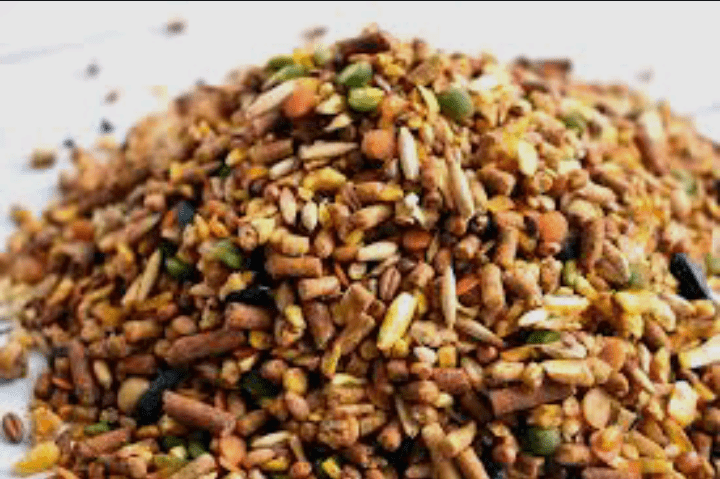Keeping chickens is not just about eggs; it’s about ensuring your feathered companions lead healthy, happy lives. One key ingredient to their well-being is the food they consume. While store-bought chicken feed is readily available, many poultry enthusiasts are discovering the joys of creating their own DIY chicken feed.
In this guide, we’ll take a simple and practical approach to understanding the basics of crafting nutritious and balanced feed for your flock.
From urban homesteaders to suburban families, the idea of tailoring chicken nutrition to meet specific needs is gaining popularity. DIY chicken feed isn’t just about cost savings; it’s about knowing exactly what goes into your chickens’ diet.
By embracing a hands-on approach, you not only gain control over the ingredients but also get to witness the positive impact on your chickens’ health.
In this journey of crafting your own chicken feed, we’ll explore the fundamental components your feathered friends need for optimal growth, egg production, and overall well-being. From protein-packed soybeans to energy-rich grains, we’ll break down the ingredients that make up a well-balanced feed.
We’ll go into the art of creating a personalized recipe, taking into account the specific needs of layers, broilers, and dual-purpose breeds.
Feeding your chickens isn’t just a task; it’s a chance to connect with your flock on a deeper level. Whether you have a sprawling backyard or a cozy urban space, the principles of DIY chicken feed are adaptable and rewarding.
So, let’s embark on this journey together, exploring the world of crafting nutrient-rich goodness for your feathered companions. It’s time to roll up your sleeves, gather your ingredients, and ensure your chickens enjoy a diet that’s as unique as they are.
Read also: DIY Carpet Cleaner: A Simple Guide to Refreshing Your Floors
DIY Chicken Feed

1. Understanding the Nutritional Needs of Chickens:
Before going into the art of creating your own chicken feed, it’s essential to grasp the nutritional requirements of chickens. These feathered creatures, whether layers, broilers, or dual-purpose breeds, require a balanced diet comprising proteins, carbohydrates, fats, vitamins, and minerals.
The specific needs may vary based on the age, breed, and purpose of the chickens. For instance, layers require additional calcium for eggshell production, while broilers benefit from higher protein content to support rapid growth.
2. Components of DIY Chicken Feed:
Protein Sources:
- Examples: Soybeans, sunflower seeds, fish meal, dried mealworms.
- Considerations: Ensure a balance of essential amino acids for optimal growth and feather development.
Carbohydrate Sources:
- Examples: Grains like corn, barley, oats, and wheat.
- Considerations: Balance carbohydrate content to meet energy needs without compromising nutritional balance.
Fat Sources:
- Examples: Sunflower oil, flaxseed, and sesame seeds.
- Considerations: Include essential fatty acids for feather health and energy production.
Vitamin and Mineral Supplements:
- Examples: Crushed eggshells (for calcium), oyster shell, leafy greens, and fruits.
- Considerations: Ensure a diverse range of vitamins and minerals to prevent deficiencies.
3. Creating a Balanced Recipe:
Now that we have a basic understanding of the essential components, let’s go into creating a balanced DIY chicken feed recipe. Keep in mind that the proportions may need adjustments based on the specific needs of your flock.
Basic Layer Feed:
- Ingredients:
- 60% grains (corn, barley, oats, wheat)
- 20% protein source (soybeans, fish meal)
- 10% fat source (sunflower oil, flaxseed)
- 5% mineral and vitamin supplements (crushed eggshells, oyster shell, leafy greens)
- 5% extras (mealworms, seeds)
Broiler Feed:
- Ingredients:
- 70% grains (corn, barley, oats, wheat)
- 15% protein source (soybeans, fish meal)
- 10% fat source (sunflower oil, flaxseed)
- 3% mineral and vitamin supplements (crushed eggshells, oyster shell, leafy greens)
- 2% extras (seeds, insect protein)
Read also: DIY Furniture: Unlocking Your Creativity at Home
4. Considerations for Mixing and Storage:
Mixing Process:
- Invest in a reliable feed grinder to ensure a consistent and well-blended mixture.
- Mix in small batches to maintain freshness and prevent nutrient degradation.
Storage Tips:
- Store the feed in a cool, dry place to prevent mold and spoilage.
- Use airtight containers to protect against pests and maintain nutritional quality.
- Rotate stock to ensure that older feed is used first.
5. Feeding Strategies:
Age-Specific Feeding:
- Adjust the feed composition based on the age of your chickens. Chicks require higher protein content for growth, while layers may need additional calcium during egg production.
Observation and Adjustments:
- Monitor the health and behavior of your flock regularly.
- Adjust the feed composition if you notice signs of nutritional deficiencies or excesses.
6. Case Studies: Real-Life Success Stories
The Greensmith Family: A Sustainable Approach
- The Greensmith family, residing in a suburban setting, decided to embark on a sustainable journey by crafting their own chicken feed. By incorporating kitchen scraps and locally sourced grains, they not only reduced their ecological footprint but also witnessed healthier, happier chickens.
Urban Homesteading with the Johnsons
- The Johnsons, residing in a small urban space, embraced the DIY chicken feed approach to gain better control over their flock’s nutrition. By sourcing ingredients from local farmers’ markets and establishing a small garden, they created a holistic and cost-effective feed solution.
Read also: Complete Steps in Glass Recycling Guide
